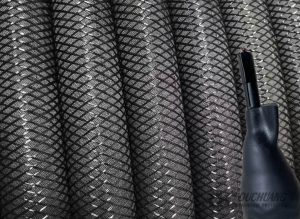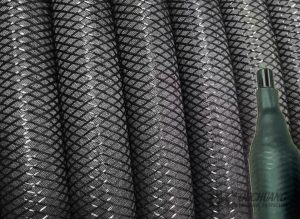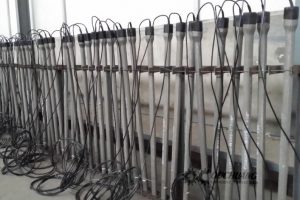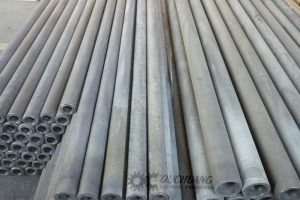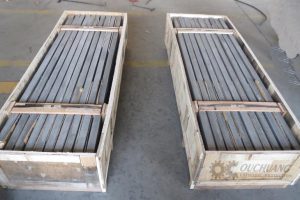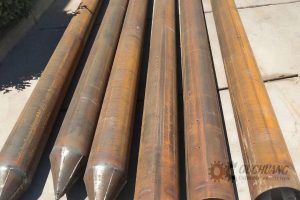Home>>>Impressed Current Anodes
Impressed Current Anodes
Flexible Anodes
Flexible anodes are divided into two types according to their structures:
1. An integrated uniform continuous structure auxiliary anode made of conductive polymer as the base material;
2. The other is a binary structure auxiliary anode made of cable + MMO/Ti as the base material.
Appearance characteristics of flexible anode:
Both flexible anodes are long-line continuous auxiliary anodes, which are called flexible anodes because of their flexible shape and different from other auxiliary anodes. It is also called cable anode or linear anode because of its appearance resembles a cable.
Flexible anodes are mainly used in:
1,Buried steel pipelines-cathodic protection of oil pipelines, gas pipelines, water pipelines and thermal pipelines
2,Cathodic protection of storage tanks
Advantages of flexible anode
01.
Convenient construction, good anti-corrosion effect
Convenient construction, good anti-corrosion effect
02.
Minimal interference to surrounding metal structures
Minimal interference to surrounding metal structures
03.
Good protection
For complex pipe networks, aging pipelines, storage tank bottom plates, high resistivity environments, etc., the protection effect achieved is unattainable by other anodes
04.
Protection current is evenly distributed
Protection current is evenly distributed
05.
No pollution
Flexible anode will not pollute the environment
06.
No shielding and interference
There is no shielding and interference in the dense area of complex pipe network
High Silicon Cast Iron Anode
The high-silicon cast iron anode has a long service life and is an ideal auxiliary anode for impressed current cathodic protection systems. Our company’s high-silicon cast iron anode production complies with the American ASTM A518-3 standard and complies with SY/T0036-2000 “Pipeline impressed current cathodic protection system design” specification”.
High-silicon cast iron anodes are widely used in the protection and anti-corrosion of underground or underwater steel structures such as oil, natural gas, chemical plants, tap water pipelines, wharf steel structures, buried pipelines and cables.
Deep Well Anode
Deep well anode is a forced current cathodic protection anode installation method widely used at home and abroad. Compared with the shallow buried anode bed, the deep well anode bed has the advantages of small footprint, low grounding resistance, good current distribution, less interference to the surrounding buried metal structure, stable working environment, and no damage. Therefore, it is especially suitable for forced current cathodic protection in cities and areas with dense factory networks. However, compared with the shallow buried anode bed with the same current output capacity, the deep well anode bed has a higher cost, so people have higher expectations for its operating efficiency and service life. In recent years, my country has built many deep well anode beds and gained certain experience. During use, the anode cable is interrupted, and the uneven dissolution of the anode causes its joints and ends to break prematurely. Vapor resistance often occurs during use, which makes the anode bed’s service life shorter. Abroad deep well anode bed has a long service life. At present, the alternative deep well anode bed has been developed, which is also our future development direction.
Another important advantage of using the deep well anode design is that the ground area required for installation is limited, because all anodes are stacked vertically in a borehole, and the installation can be done in a very limited surface area. This advantage is not only reflected in congested areas with limited area, but also in the feasibility of installing deep well anode systems. This is because the current discharge area is located deeper in the earth, and the anode can be far away from the structure.

